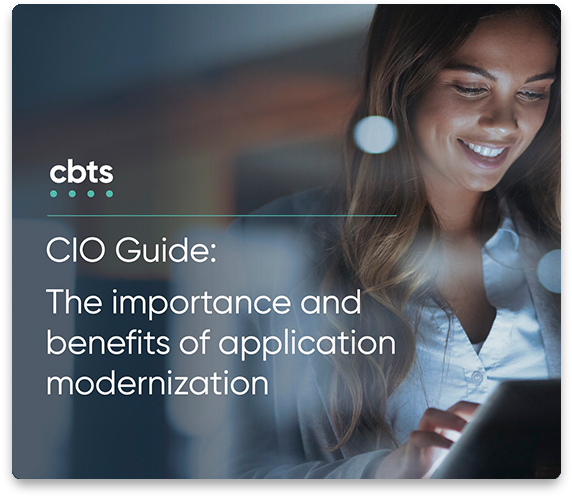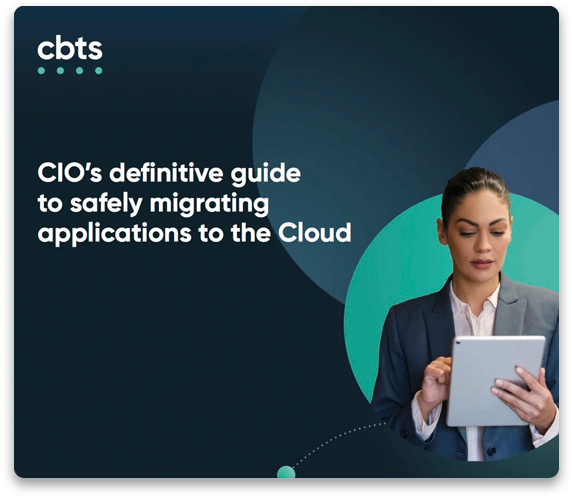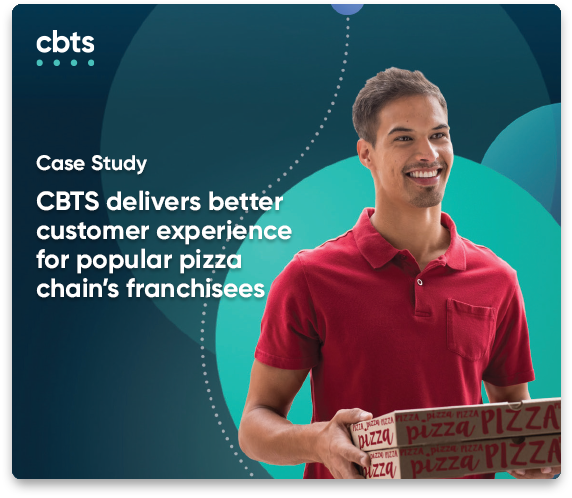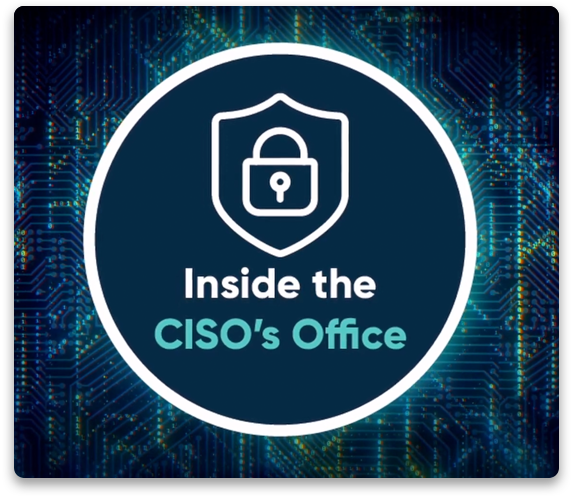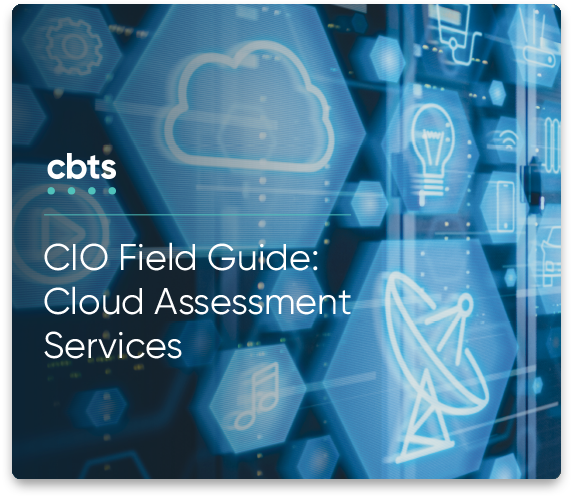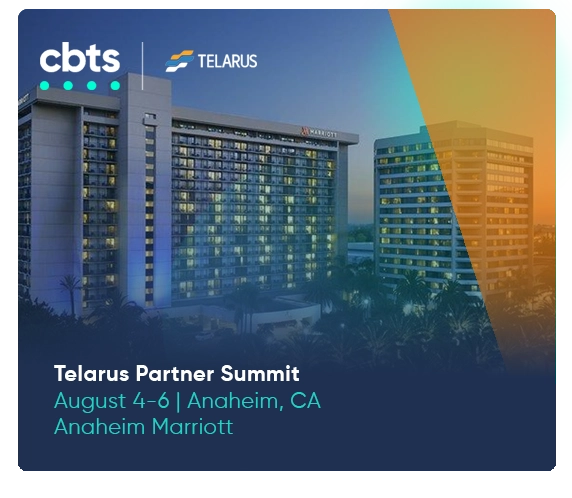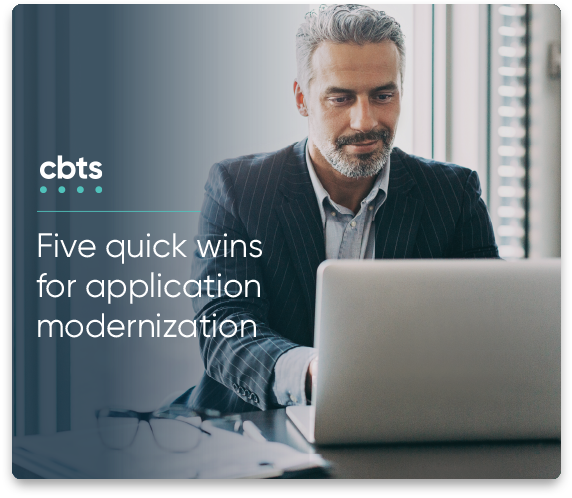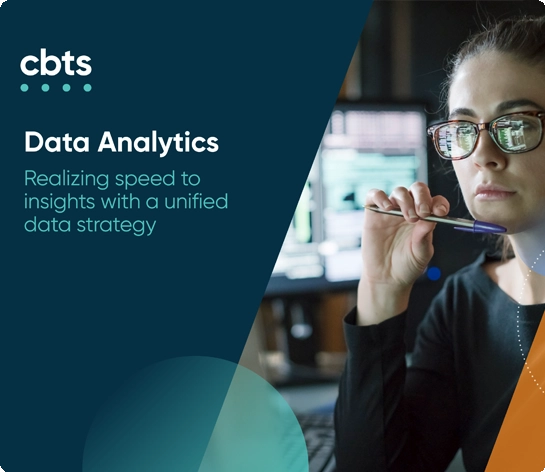Data Management and Governance
Keeping data sources secure, reliable, and consistent to support advanced analytics

What is data management and governance?
Benefits
Our approach
FAQs
High-quality data for high-quality decision making
Industry leaders look to their data for strategy insights. Raw data, however, is too disorganized to yield good information. Silos, incompatibilities, and redundancies across the enterprise data landscape hamper your ability to achieve a truly complete view of your organization.
Expert data management and governance from CBTS integrates data sources smoothly and develops quality-control and monitoring processes to maintain accuracy. Unleash growth with precise and reliable insights to build on.
Data Management
What is data management and governance?
Enterprises collect data from an enormous range of sources, including software platforms, Internet of Things (IoT) implementations, apps, customer interactions, and more. Each source stores and transmits this data in its own way. Data management and governance processes unify these disparate data sources into a consistent, accurate, reliable, and protected resource for use with enterprise analytics and AI.
BENEFITS
Benefits of quality services for data management and governance
Cultivate a rich and trusted data resource.
Lay a solid foundation for your data-driven business, and develop the tools to maintain it.

Reliability
Ensure consistency of data across a wide range of sources.

Integration
Seamlessly unite data from all of your business systems for broad insights.

Data governance
Protect and preserve sensitive information with fine-grained access control.

Observability
Monitor and optimize data utilization throughout the enterprise.

Data quality
Clean and organize data to drive the most accurate analyses.

Scalability
Incorporate more data sources, more productively.
%
of organizations cite a lack of governance as the primary data challenge inhibiting AI initiatives.
DBTA
OUR APPROACH
Why CBTS?
CBTS takes a tailored approach to data management and governance solutions, beginning with a detailed investigation of your current state and an in-depth understanding of your goals. Our experts bring to bear their knowledge of best practices and compliance considerations to design a management model that delivers on your data’s potential.
Data discovery
Audit existing data and sources to identify challenges and vulnerabilities.
Cleaning
Modify data quality, consistency, and governance standards.
Master Data Management
Establish a single source of truth for enterprise data and the processes for maintaining it.
Monitoring
Observe, fine-tune, and build upon your data’s utilization in enterprise applications.
Data breaches and compromised data integrity are two sides of the same security coin. Comprehensive data governance prevents unauthorized access to sensitive information both externally and internally, preserving compliance and maintaining the quality of an essential resource.
FAQs
Top 5 questions
What are data lakes and warehouses, and how do they differ from each other?
Both are large-scale data storage solutions. Data lakes store unstructured, unprocessed data in its original format. Data warehouses store data that has been processed to serve specific analytical purposes. A hybrid solution of the two is called a “data lakehouse.”
What is DataOps?
DataOps is an approach to designing, managing, and maintaining a data architecture. It emphasizes automation, collaboration, and continuous improvement to deliver improved performance.
What is an ETL/ELT process, and why is it important?
ETL stands for extract, transform, load, and ELT is extract, load, transform. Both data integration processes transmit data from a source to a storage location. An ETL process transforms the data into a usable format before loading it into storage, while ELT handles the transformation within the warehouse.
How does data engineering support AI development?
An enterprise AI model relies on unified, high-quality data. Good data engineering ensures that data is clean, accurate, and ready to be used for training when it arrives in the data lake or warehouse.
How do batch and real-time integration differ?
Both describe how data is pushed to the data lake or warehouse. Batch integration updates at regular intervals, whereas real-time integration sends new data as soon as it is available.
Related stories
Schedule a complimentary 30-minute discussion
with a CBTS solution consultant
Talk to one of our experts today to see how we can help your organization modernize, migrate, and support cloud-native applications

